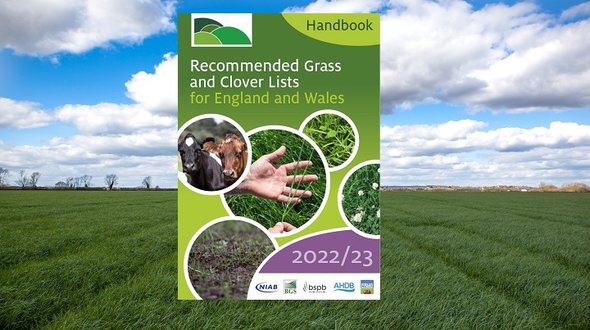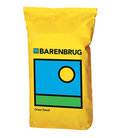Focus on the whole approach is key to conventional silage systems
Conventional silage production has been at the heart of dairy farming for decades and keeping a close eye on the smaller details can help raise quality.

Conventional silage production has been at the heart of dairy farming for decades and keeping a close eye on the smaller details can help raise quality.
The traditional or conventional two to three cut approach to silage making needs little introduction and its versatility means it is still the preferred method for many farmers in the UK.
It is particularly favoured by those on heavy soils or at the mercy of climates that provide more than their fair share of troublesome weather, as Mhairi Dawson from seed breeder Barenbrug explains.
“Traditional systems can be easier to manage than multi-cut approaches and offer farmers longer cutting windows, reduced field traffic and the need for fewer fertiliser applications. Areas such as north-east Scotland or locations with high clay soil content will favour this system as first cut will typically begin in mid-May.
“Other benefits include the reduced number of cuts increasing fibre content of the silage so there is less need for dietary supplementation in the ration, but this has to be managed carefully to get a balanced forage that isn’t made up of unpalatable stems. The system often allows for more winter grazing, which is not always accounted for in the yield figures.”
Although the versatility of the traditional system has some benefits, Peter Smith, Ecosyl silage specialist, says the focus for farmers should still be on quality as well as quantity of the silage.
“Farmers often delay cutting to boost silage yield. While this may produce a heavier crop, the nutritional value will be lower. As crops mature, stems become more lignified, seed heads appear, and digestibility and sugar content declines. None of these are conducive to achieving the maximum amount of milk from the silage.”
Getting the cutting height right
To avoid negatively impacting on silage quality, stunting grass regrowth, or damaging machinery, operators should undertake regular checks on equipment throughout the day to ensure it is correctly set up.
“A stubble height of 5cm is considered the optimum to encourage regrowth,” says James Hutchinson, product specialist at Kuhn Farm Machinery. “Cutting lower will hamper quick recovery for following cuts and nutritional quality is poorer at the base of the plant.
“On undulating ground, there is also the risk of mower blades becoming blunted, and silage contamination from soil and stones is likely to be higher, which could also increase the potential for introducing harmful bacteria.”
Mhairi Dawson agrees: “Farmers should also avoid cutting dead material at the base of sward, and this could be especially important this year as the grass has already grown long over winter, which may have created a microclimate for unwanted bugs.”
A good set of mower blades throughout the whole season is critical to achieve the cleanest cut and maintain the health of the sward, recommends James.
“The ability to change the blades quickly, such as with Kuhn’s Fast-Fit system, as opposed to using spanners to loosen and tighten nuts and bolts, will save hours over a year.”
To condition or not
If there is the option to use a mower conditioner then farmers should be clear what they are trying to achieve, accounting for the sward mixture and being aware of the weather forecast in the coming days.
Peter Smith says it can be dependent on the species in the sward: “Setting the conditioner correctly is essential, as too harsh and it will excessively bruise the grass – requiring a lot more power and diesel and slowing the mowing speed down. Set it too light and it won’t have the desired force to bruise the material. Where the sward contains clover or other legumes, you should leave the conditioner set wide to avoid over-conditioning.”
Conditioners help break down the waxy cuticle of the leaf and James Hutchinson explains farmers should be aware that this can allow the plant to absorb water if it rains.
“Spreading the grass has the potential to increase soil contamination when raking into swaths, but the ability to hit the target dry matter in a shorter period should be of greater importance as conditioned grass can take on water easily if it rains before harvesting. Kuhn’s FC mower range uses a heavy-duty pivoting steel finger system and the intensity is adjustable between two rotor speeds and the hood has five different positions.”
Achieving a quicker wilt is key
There is a tendency with silage production to revert to old methods and wilt for a set amount of time. However, gains in quality can be achieved by keeping a close eye on the crop rather than the clock, and Peter Smith says the aim should be to wilt to the optimum target of 28-32% DM in the shortest possible time.
“In good conditions, wilting for a traditional 24 hours could be too long and quality will drop off very quickly,” Peter explains. “Monitoring how quickly the crop is drying out post-mowing and any tedding, but most importantly how it is reacting to the weather, will all determine when to start harvesting.
“In warmer weather, tedding lighter crops immediately after cutting can mean they reach 28-32% DM in a matter of hours, rather than waiting for the next day.
“Reaching this figure quickly has benefits in limiting the nutritional decline of the grass in the field, which also means more sugar will be left to feed to the cow. There are various views about whether grass should be cut in the morning or afternoon, but ultimately it is a race against time to wilt and ensile as rapidly as possible. Lost silage energy equates to lost milk.”
Setting up the fermentation
Along with selecting the appropriate additive, Peter Smith suggests “a clean clamp with any cracks suitably repaired” is essential for efficient fermentation. But so too are sufficient compaction and thorough sealing to keep out air.
Large quantities of silage coming into the clamp puts a lot of pressure on the machinery to spread it evenly and consolidate it to the required standard.
“There is always a desire to keep the forager going at all times, but this can have a detrimental effect on efficient consolidation,” says Peter. “Grass in the clamp should be consolidated in layers no more than 15cm deep.
“Getting grass off the field to preserve quality is key, but if there is too much air trapped in the clamp when you ensile, fermentation quality is reduced and losses from aerobic spoilage (heating) are increased.
“Side sheets are also essential as concrete is porous to oxygen, and operators should take extra care to not over-fill clamps as anything above the walls is a challenge to consolidate. Use an oxygen barrier film beneath the top sheets and always ensure the top is weighted effectively.”
Clover essential for longer rotations
Along with sowing a grass mixture that is suited to the soil and the frequency of rotation, farmers should be including clover, as the benefits could extend beyond just that of silage production, says Mhairi Dawson.
“Clover adapts well to varying management regimes, and both white and red clover can be utilised in medium- and longer-term rotations. Larger leafed clover varieties are best suited to silage production.”
“Compared to a grass only sward, research has shown that red clover boosts trace elements such as copper and zinc, while white clover is proven to boost levels of selenium, iodine and molybdenum.”
However, there are several factors to be aware of when choosing which one to add into the sward, advises Mhairi.
“Red clover has a deep tap root and should be focused on drier fields, but farmers should be aware that high oestrogen content can prevent breeding ewes settling if grazed after silage production. White clover is more persistent but has the potential to fix less nitrogen than red and features a more branched root system.”
Testing silage quality
Farmers who have built a clean and well-maintained clamp can look to focus on testing the quality of silage, which is now easier and quicker thanks to a new handheld device. In conjunction with laboratory testing, Eurofins Agro UK offers a testing device called SCiO. “SCiO enables farmers to test forage as often as is needed. It is best used to measure forage between lab tests to help farmers adjust to climatic changes or heating in the clamp,” says Eurofins Agro UK managing director Daniel Robinson.
SCiO tests for dry matter percentage to mitigate any variation in silage between tests. To increase accuracy SCiO can be used on a daily basis to eliminate any inconsistencies in the ration that could be caused by seasonal factors such as rain or heat. “This means that the weight of each ingredient in the ration will be more accurate because moisture levels can be tested before it is mixed,” he adds.

Clovers come in many types from Subterranean to Alsike, Crimson to Egyptian. The focus for UK grassland is Red and White clovers. So, what is the difference between red and white clover for farming? See our top tips and advice for sowing with clovers.

See the top England and Wales Recommended Grass and Clover Lists

A blend of red clover varieties, to optimise performance across a variety of environmental and management conditions.

A blend of white clovers, to optimise performance across a variety of environmental and management conditions.